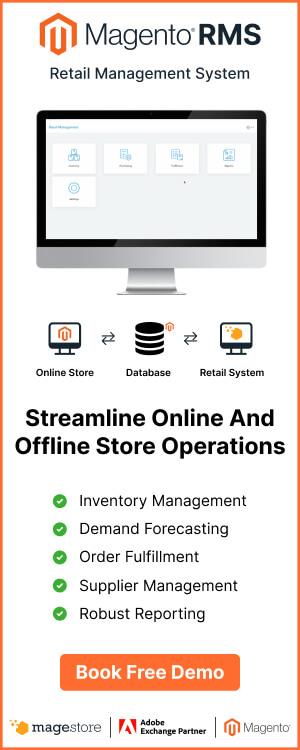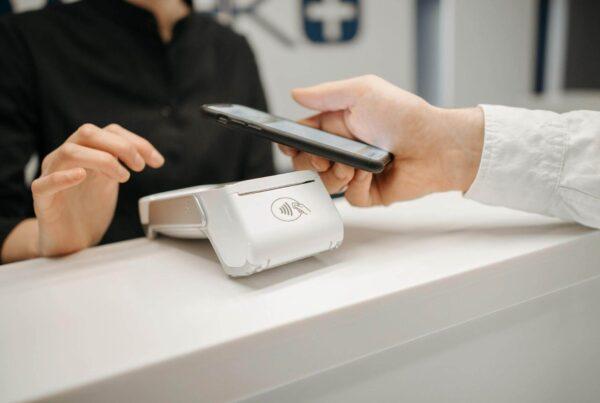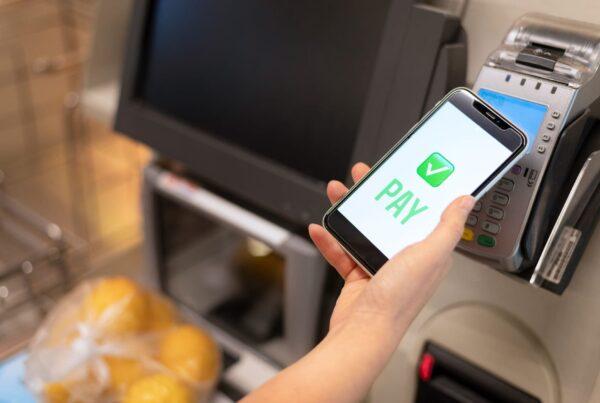Continuing the previous topic about retail trends, in this second episode of the Retail’s New Normal podcast, we’re going to talk about how you as a retailer can launch a new retail system successfully even during or post-pandemic. Some big challenges will be mentioned: What you need to prepare and a step-by-step guide to launching a new system with a provider.
Our special guest is Jessie – a retail expert from Magestore. She will share everything from her experience with launching new systems for retailers like you. Let’s check out the episode to see what she will share about this topic.
About the Guest
KEENAN: Hi Jessie, thank you for joining us today. Can you introduce yourself to the RNN audiences and tell us more details about your job at Magestore. How do you support customers in launching their business?
JESSIE: Hi everyone, I’m Jessie – Business Analyst from Magestore. Thank RNN for having me today and I hope that we will have a great time sharing together.
I’ve been working as a Business Analyst at Magestore for two years now. Being a BA, I’m the one who will go along with the customer from Day one when they start their project to the day the system is live in real stores. During that journey, I’m responsible for listening to their problems, proposing solutions to resolve them, make sure the system works well until the launching is successful. I can say that a BA like me will be so close with the customers and really understand their business and system.
Retailer’s concerns and solutions when re-opening business
KATE: So I see that quite a few countries are implementing vaccines. Stores are re-opening. And people start living in a new normal state. I think that’s the reason many entrepreneurs want to start a new business or simply re-open a brand new business. So, we want to know more about the country pattern that you see that is the trend here. Which retail industry is surging back in the new normal? And why?
JESSIE: Sure. As you can see, in fact, since 2020, the COVID-19 pandemic has had a strong impact on business activities in all industries and fields.
However, from the beginning of 2021, as you mentioned, with the strong implementation of vaccines, we are now seeing a great recovery in the global economy. With vaccination, people now feel safe when leaving the house, so the need for entertainment, fitness studio, dining, and shopping, especially clothes will skyrocket.
Some other industries are still growing since the outbreak of COVID and will continue to grow, such as consumer goods (grocery), cosmetics and personal care, technology home decoration, houseware,… because people have spent a lot of time staying at home.
Listening to the podcast on Youtube
KATE: So I know that you work on a lot of projects for retailers. So, do they share any concern about the current situation with you when they decided to re-open the store, like how did they feel about that?
JESSIE: Yeah. At first, all store owners feel anxious. They’re worried about the decrease in sales, numbers of customers, high inventory storage, and many other things. But, with the software, the technology, and just-in-time solutions, they gradually overcome and keep everything work well, even better during COVID.
KATE: Can you be more specific here, like how do they still open the business but keep the community safe at the same time? Any examples about the way they apply any methods or technology/model to be able to do that?
JESSIE: Yeah, for example, they invest more in their eCommerce website because consumer behavior is shifting to online shopping, to increase the sales from the physical stores as well. Of course, people need to follow some required hygiene practices when shopping in-store to keep everyone safe.
Some businesses invest in last-mile delivery with optimization in the delivery time.
This can be seen in grocery retailers. Last year, I worked with a big grocery retailer in Pakistan and we did build a solution which helps them to optimize the delivery time as fast as we can because grocery consumer has a higher requirement in shipping time during COVID.
KEENAN: Any other tactics or models that you see from your customer’s requirements?
JESSIE: Yeah, besides that, there’re a lot of other businesses that improve the customer experience, which can mention the Click & Collect shipping method. We helped them to build the solution to have a smooth process between customers and staff at the store so that the process is quick and correct.
Some businesses also applied new shipping methods like using trucks then ship by area, and we helped them to build solutions and customize the system to track all those shipments.
The ideal implementation process

KEENAN: In short, Click&Collect should be a must during such a pandemic crisis like this correct. I mean it’s all come down to creating a more efficient way for the customers to collect their items
Speaking about creating more efficiency. What aspects concern the customers and do they want to focus on it during this time?
JESSIE: Basically, each customer has their own request and concerns for the system, based on their business and their needs. Overall as I see, they care a lot about the system performance because this affects the customer experience, which directly affects their revenue. Besides, they also often seek an easily customizable system, a user-friendly and affordable one.
KEENAN: So, as a senior business analyst, can you share with the audience what does it take to make the delivery smoothly from a technology company point of view. And what is Magestore doing at the moment in regards to the pandemic? Is there any change comparing prior to the pandemic?
JESSIE: I think that not only delivery. Every role who’s responsible for working with customers, building trust with customers will be the foundation and the key factor in the long-term working process between the two parties.
With delivery, besides building trust, I think to keep that trust present throughout the work process is more important. And it will help us to make delivery become smooth. We mainly focus on 2 factors to get there:
1. Transparency: We’re transparent with customers on plans, updating tasks, on any documents regarding the project. We’re also transparent by delivering the result to customers weekly through acceptance calls then they can experience soon and get feedback or update if needed soon.
2. Cross-function: With every project, we create a Slack channel with all of our team members (from PM, BA to developers) and customer’s team members. If they have any question/concern, they just need to put the question on that channel or reach to anyone in our team then they can get the responses, even when the one who gets their question is not an expert on that or not responsible for that. We want to provide customers the best experience through communication channels, without reaching out to too many parties to get answers.
KATE: So, how about in this pandemic, how Magestore and the launching process are helping retail merchants during the Covid 19? I mean is there any example to help them visualize the actual work in detail?
JESSIE: I think it’s also a good thing that so far. Most of Magestore’s customers are overseas, so the working method between the two parties is online, especially face to face online. Even when the Covid epidemic broke out, it was easy for us to continue the process as before without any difficulty.
But you know, we do not standstill. Every day, we try to improve the process to help customers have a better and smoother experience during the project, for example, we create a tool to generate tasks right from the customer’s message in the Slack channel, linking that task to our system. So even when a customer reports an issue or puts a question at night time, we still easily log it for the next day to handle, and it’s also a replied message from us to our customer to let them know and feel more secured.
KEENAN: What is the process your team applies when implementing a project for a big vs. a small customer? Do you have some sort of step by steps process for this? It can be useful for someone who is wondering about this during this time.
JESSIE: Actually, the process is the same with big and small projects. Basically, with a customer, we always require them to prepare at least 1 DEV site, which is closed to the Production site and will be the acceptance site for every feature before the launch.
Firstly, we will verify site information, discuss with customers the process to apply code when launching the system. Next, BA will work closely with customers to define the features they need to see which one is available in our product, which one needs to add more config/customization.
Then, we will start to install, code customization, configure everything regarding the customer’s business on the DEV site. The most important part is testing. All of the things of the new system will be tested by BA carefully to make sure it works correctly with the customer’s expectations. Besides, we will also install performance tool tracking so that we can help them check the system performance during the launching time.
Finally, we will support customers deploy the software to the LIVE site, usually about 1-2 weeks before the launching day because we need time to test everything again 1 more time on the LIVE site.
Every step will be defined clearly with a timeline after discussing with the customer, and as I said, our team is the one who goes along and supports the customer in each step.”
The biggest challenges
KATE: Very detailed. I think the audiences who listen to the podcast at least will have an example from Magestore for reference. That they will need to go through the process like you mentioned to be able to launch a successful system.
I have one last question for you but it’s also a very big question. Can you brief the biggest challenges that retailers might encounter when launching a business in the new normal so that they can prepare?
JESSIE: Launching a new business is never easy, and launching a business in the new normal after Coronavirus is even tougher.
You know, the retail sector is usually considered as an economic heavyweight, because on average across OECD countries, about 1 in 12 workers are employed in the retail sector and it contributes almost 5% of GDP. However, due to the COVID-19 outbreak, along with other sectors, the retail sector is also facing severe disruptions in employment.
- So I think the first challenge is that human resources management because as I said above, it’s a fact that an organized retail store provides employment to a large number. The challenge may come from the front-line sales staff, who’s always at the forefront while serving the customers, from employee productivity and job assurance, from employee’s health, communication, or even from online sales, especially with traditional brick and mortar retailers.
- The second challenge is that we should think about is managing demand fluctuations. As you can see now, while some retailers are seeing demand fall away and customers shift channels, others are facing spikes in demand, for example, grocery retailers or pharmacies. So, in my opinion, the ability to predict and manage demand has never been more important.
- That leads to our third challenge – the long-term supply chain. I think that most non-food retailers are not yet feeling the full impact of supply disruptions now, but in long term, the magnitude and timing of supply chain disruptions across geographies and subsectors are real and it’s time for a talk between retailers and their key suppliers to access the risks and create contingency plans.
Financial, of course, is a big challenge. Covid taught us a lesson that nothing is impossible. Everything we’ve built in a few years may go away just after a few months, so shoring up the cash reserves is a must. Retailers should think first about how they continue to pay the bill if there’s any other lockdown or other factors making the downturn in demand. Having a cash forecast, building a detailed financial plan with reasonable spending allocation will help much. - Last but not least, retailers should also be thinking about the impact these massive changes will have on the customer and the customer relationship. Some questions need to be concerned like: How will you maintain trust in your brand and your products and services in this situation? How will you set customer’s expectations for today? And how will you recover the customer experience in the future? Actually, you know, in this situation, shoring up the customer relationship is just as important as shoring up the bottom line.
Closing
KATE: I think we’ve reached the end of today’s episode and great information overall Jessie. I think if our audience today is in your mentioned recovered industries, then there are lots of insightful processes that they can actually apply during their recovery stage. Or at least what could be some of the next steps if they are a bit lost during this time.
JESSIE: Thanks Keenan and Kate for inviting me, I’m very glad to be on the podcast today. I also hope to receive more ideas from the audience so we can discuss further and get more insights into the retail world together.
KEENAN: That is all for the second episode of “Retail’s New Normal” podcast. Thank you all for listening to this episode and don’t forget to follow us in your favorite podcast app that you’re listening to and receive more content from us about retail insights.
If you’re interested in what we’re sharing in this episode and want to build your own retail solution, feel free to schedule a business assessment with our experts.














